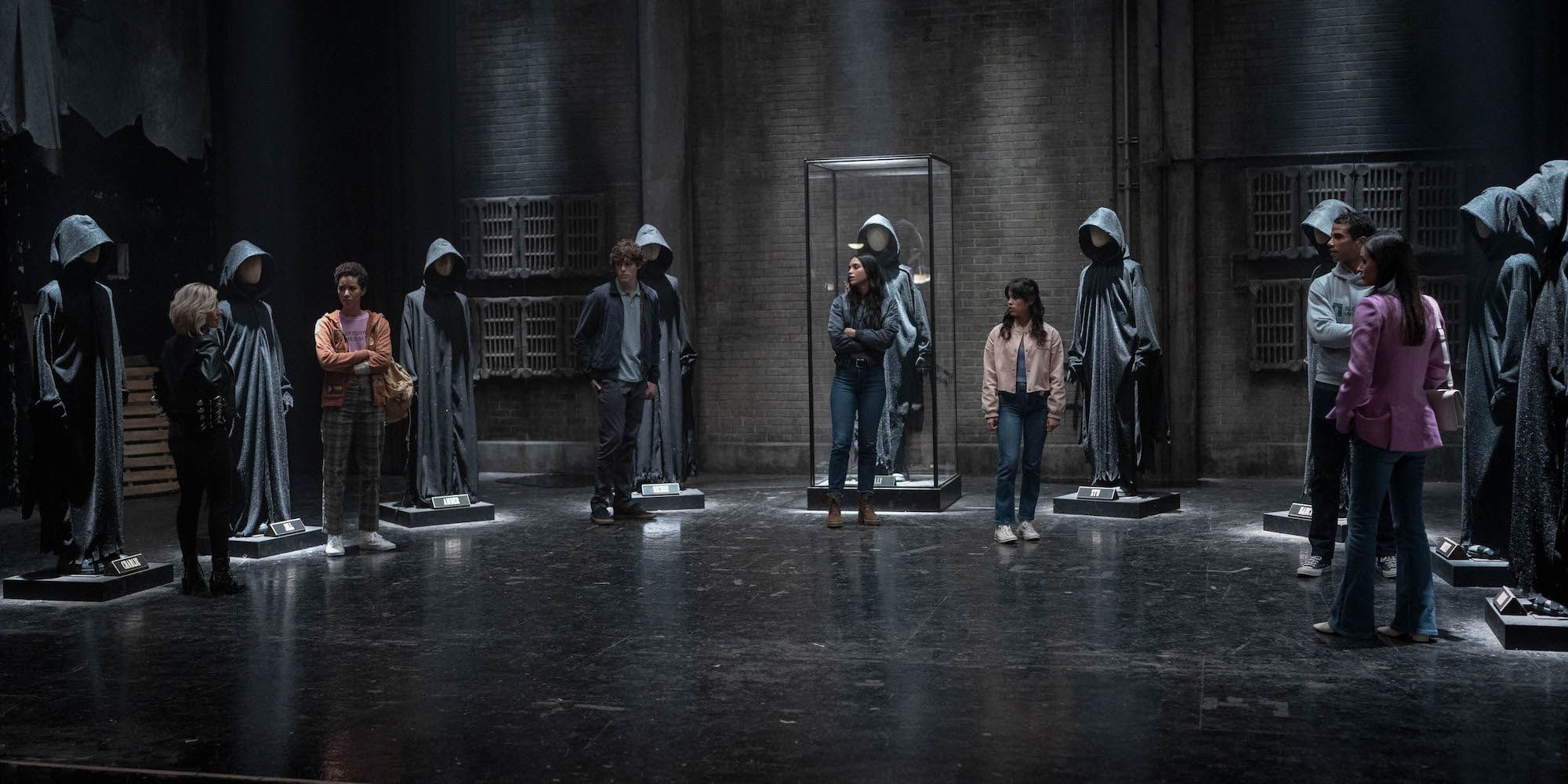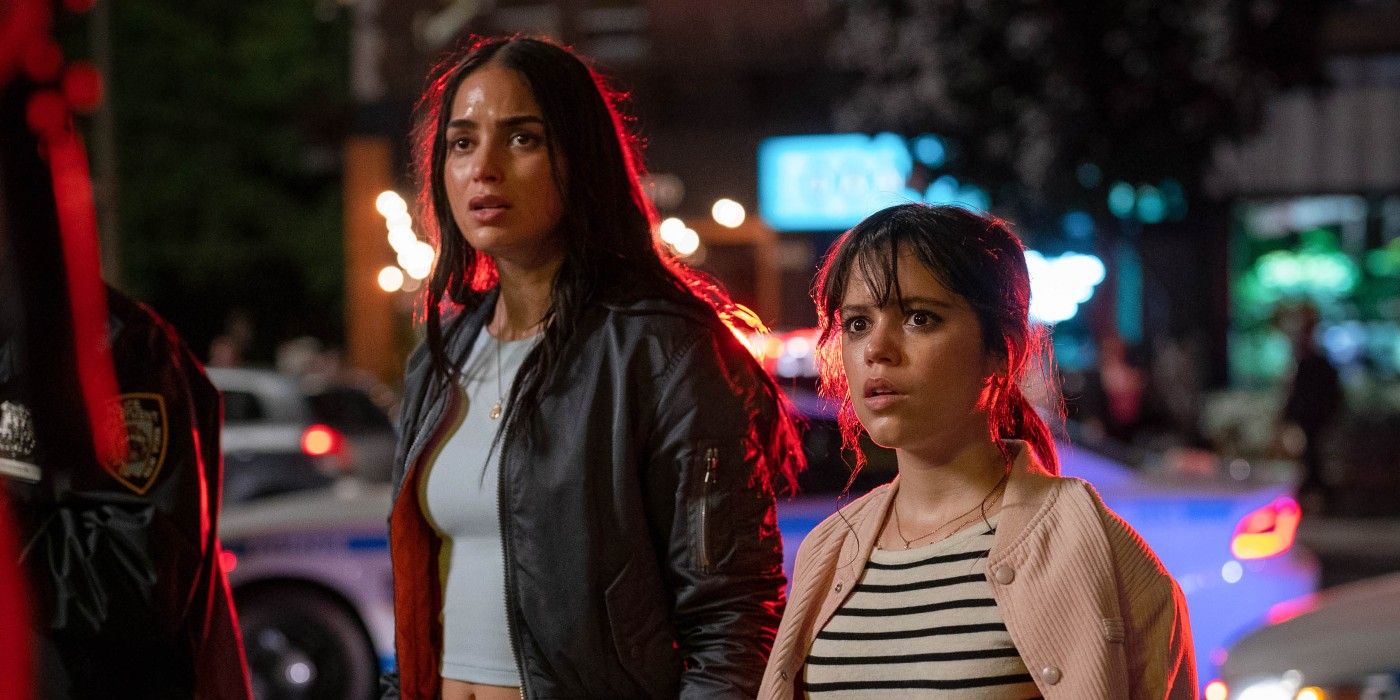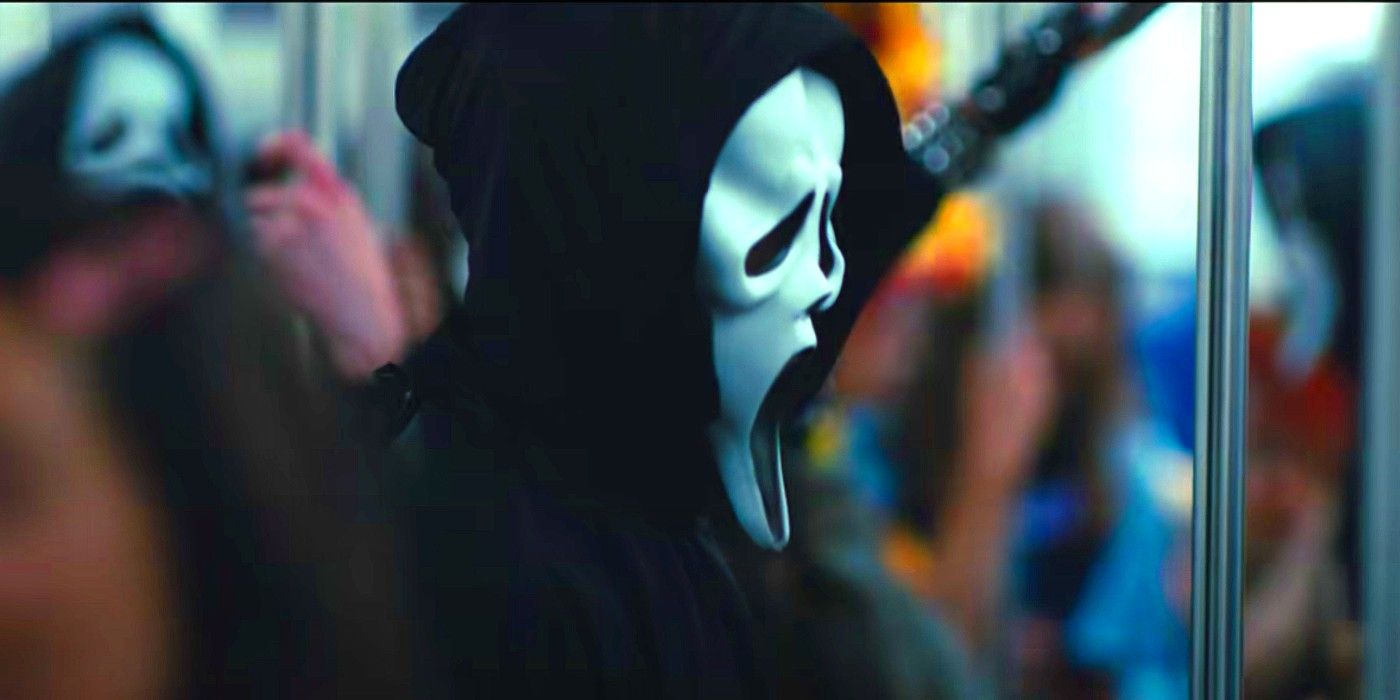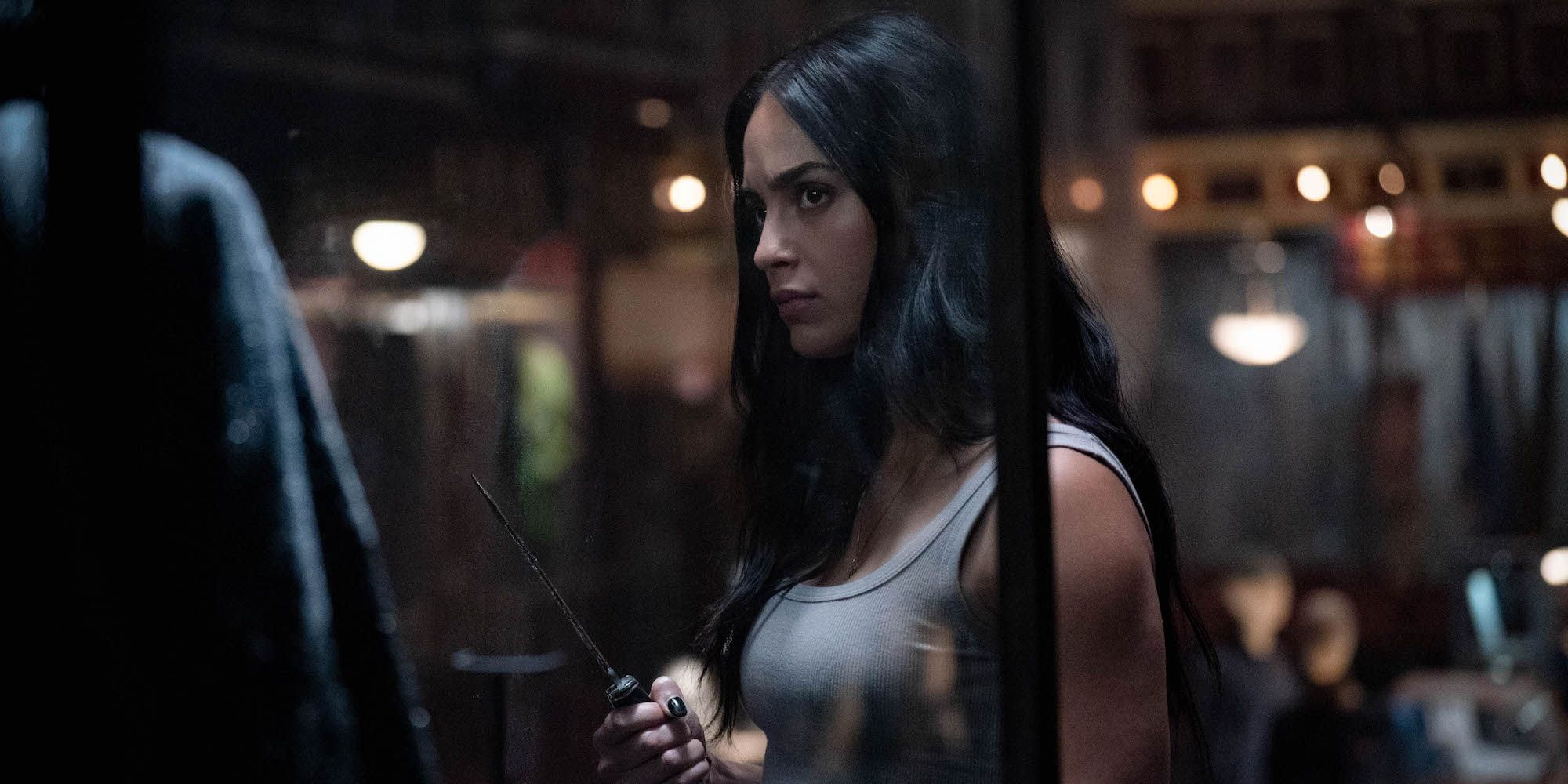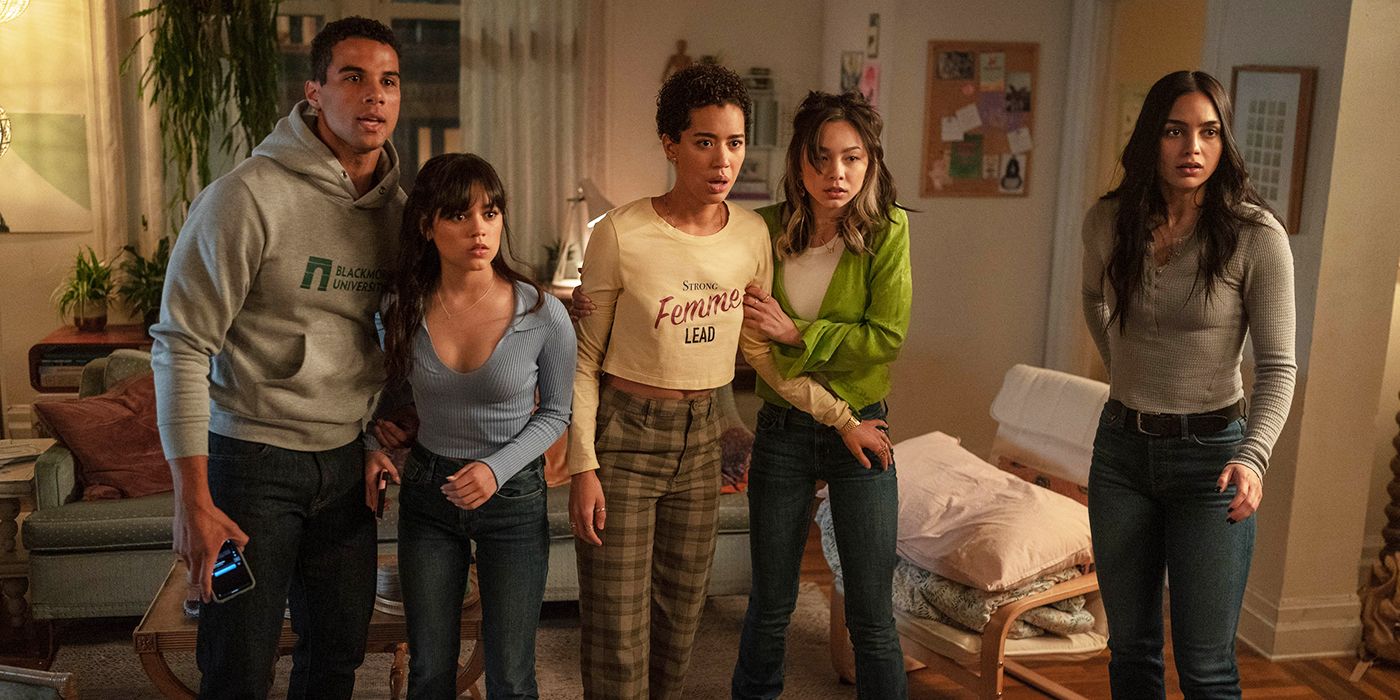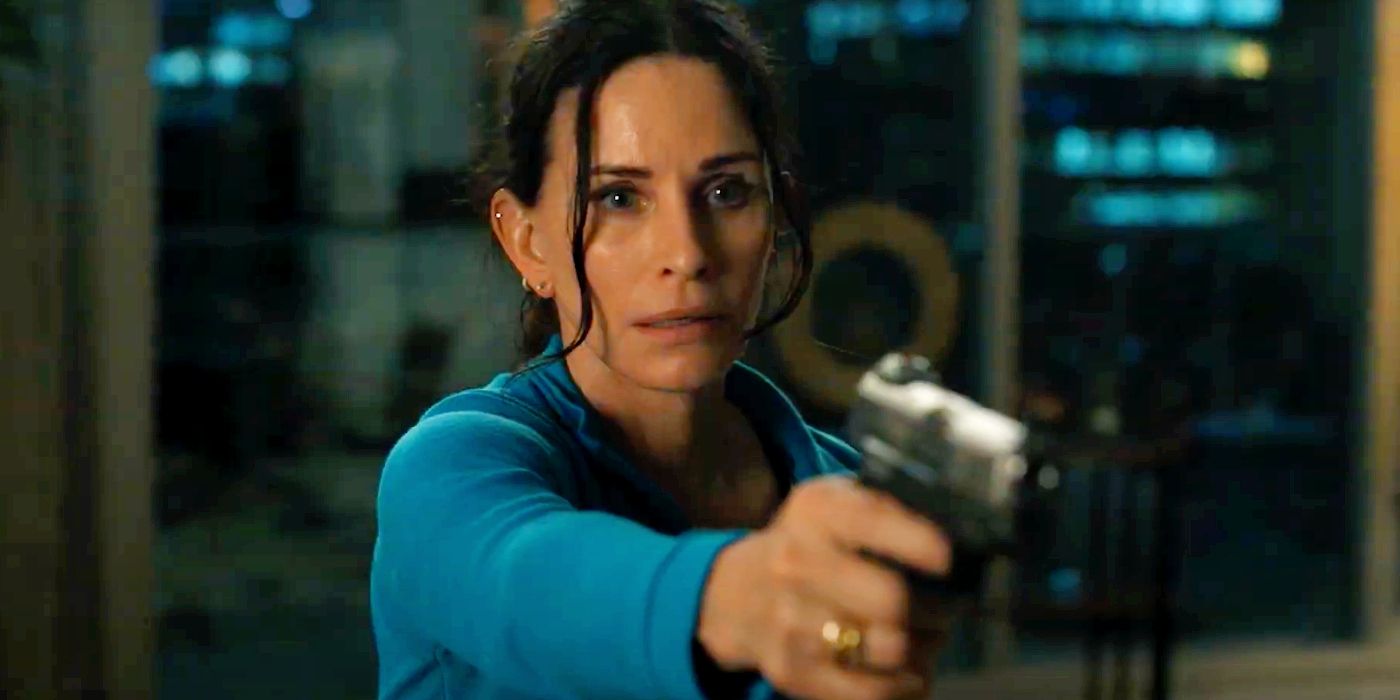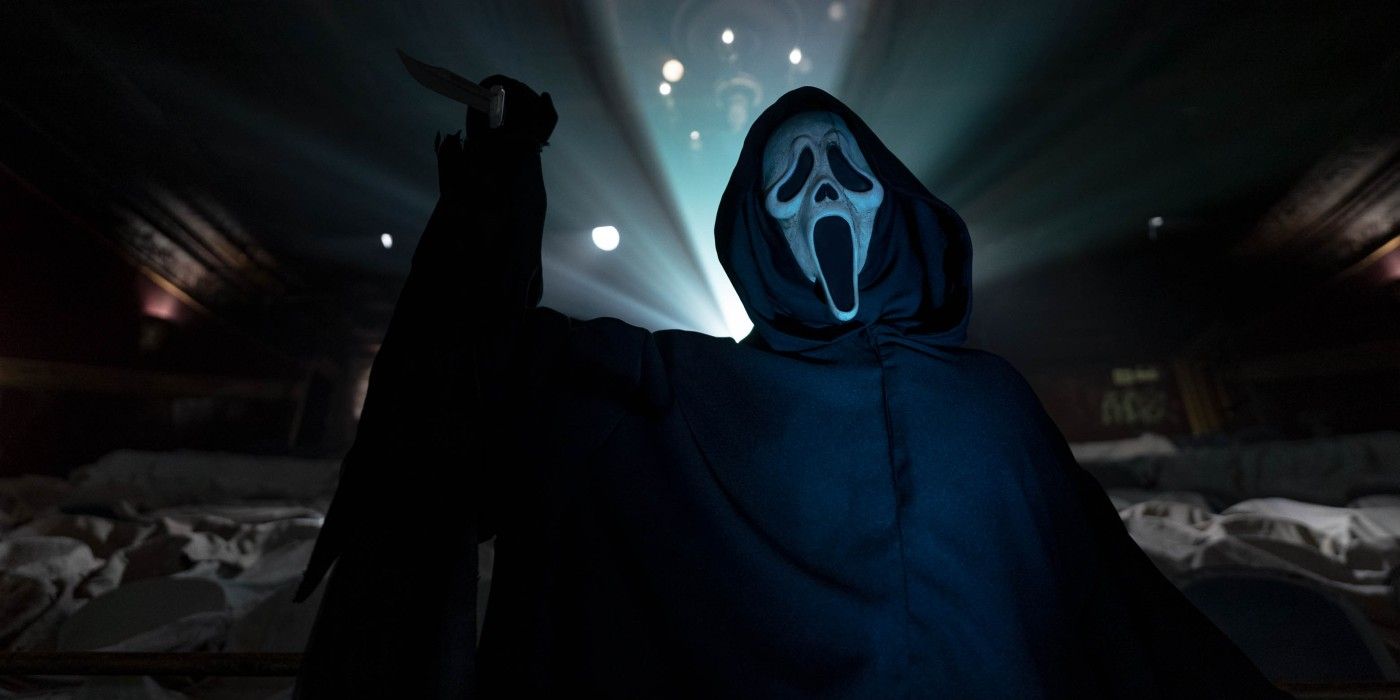Scream VI is set a year after the Woodsboro killings, with Sam, Tara, Misty, and Chad looking for a fresh start in New York. However, a new Ghostface begins terrorizing them and is once again gunning for Sam. The core four will have to fight to survive this latest string of brutal murders and protect their loved ones with the help of other Ghostface survivors, Gale Weathers and FBI Agent Kirby Reed.
Scream VI has been a massive box office success, breaking franchise records. Scream VI is directed by returning auteurs Matt Bettinelli-Olpin and Tyler Gillett, with a script penned by James Vanderbilt and Guy Busick. Melissa Barrera, Jenna Ortega, Jasmin Savoy Brown, Mason Gooding, Courteney Cox, and Hayden Panettiere reprise their past Scream roles, with Josh Segarra, Jack Champion, Devyn Nekoda, Liana Liberato, and Dermot Mulroney joining the star-studded cast.
Screen Rant spoke with cinematographer Brett Jutkiewicz about working on Scream VI. He broke down the challenges of filming the subway and the Ghostface reveal scene. He also explained how they approached setting the film in New York, using practical effects, and what makes the Scream franchise stand the test of time.
Brett Jutkiewicz on Scream VI
Screen Rant: I absolutely love Scream VI. You worked on both Scream V and VI, what has been what has it been like to be a part of the revitalization of such a beloved horror franchise with the next generation of characters?
Brett Jutkiewicz: It's been really cool to be a part of it. The first Scream definitely made a big impact on me when I saw it. It changed the genre in a way [with] that self-referential nature of it. The awareness of characters being in a horror movie really was groundbreaking at the time, and truly even as a teenager, seeing it made an impact on me.
Being able to be a part of that so many years later, continuing the franchise, and continuing the story is a really cool experience to have. Working with Matt and Tyler, the directors who I did a film called Ready or Not [with] a couple of years before Scream V, being able to continue to work with them, help them tell the stories that they're telling, and collaborate with them. It's been a great experience.
How do you keep the visual language of the Scream franchise, while still making it feel completely unique in Scream VI?
Brett Jutkiewicz: For Scream V, we talked a lot about it as kind of the passing of the baton. It's the first one done without Wes Craven and with these new characters. Obviously, we still had some legacy characters in Scream V. So in that film we really wanted to bridge the gap in a way between putting our own visual stamp on it and getting our own visual identity, but still making sure it fit in the world of films before.
In Scream VI, we felt like we had one film to transition us into this new group of characters and this new group of filmmakers telling the story. So, let's try to make this even more [our] own. We'll be cognizant of the films that came before, but really just focus on this particular story, this particular setting, these particular characters. It really started with what was on the page.
The first part of that was this new location of New York City, which obviously was very new to the franchise. The idea of being in New York, being in this big city where the danger is not lurking outside of a suburban home, but rather lurking around any corner of the street or in any crowd. So that was an exciting new way to think about how we could bring that to life visually. I lived in New York for a long time, and it was an exciting challenge for me to think about how to bring Ghostface and these characters into the city. We talked a lot about embracing the darker, grittier feel of New York, the texture of that.
It's a big city, but when you actually live there a lot of your existence is really in the small bases, whether that's a subway car or a small walk up apartment or a bodega. Everything is in these little small contained spaces where there's no way out, there's one way out. It was fun to bring Ghostface into those spaces where there's only one way to escape, and if you can't get out that way you have to look for something else. I liked introducing that sense of claustrophobia in the scenes and playing with close ups. Ghostface in Scream VI is a little bit different than the ones that have come before just in terms of his intensity and the brazenness of his attacks [are] very much in public, very much out in the open. So we wanted to add to the intensity of that.
We use the handheld camera work quite a lot for the Ghostface attacks [because we] really wanted to ground these sequences in these spaces and in the experiences that the characters are having in those moments. There's something about that extra intensity with the handheld camerawork and being able to respond to the physicality of Ghostface. We had such a great performer as Ghostface and just being able to let him lead a bit and let the camera follow what he wants to do in those sequences was another thing we did.
I love the point that you made about New York being such a big city, but being filled with these tiny compartments that you always have to go through. Did you look at any other films, especially horror films, set in New York as inspiration?
Brett Jutkiewicz: We didn't look at any particular films. I think I pulled some reference imagery from other films set in New York, but more just about texture and lighting. We didn't look at any films as a whole as a reference for this film because we had done the previous Scream together and this was our third film together. We already had a pretty good sense of each other's style and sensibility, so we just talked through the script and talked about how we felt that it could be photographed. Luckily we were pretty much on the same page. So there were less references on this filming than maybe I would normally do, especially with a new director.
The subway scene is my favorite, along with the Ghostface reveal scene. How complicated were those both to film?
Brett Jutkiewicz: The subway scene was the scene that we talked about a month in prep, in terms of how we were going to achieve it. A big part of that was just the set itself. We went through a few different iterations of ideas of how we would do that and what wound up happening was that the art department actually built that subway car entirely from scratch on our stage in Montreal as well as the platform that they were on. So the real challenge for me is how do you make a very much non moving subway car appear [to be] moving through tunnels and into and out of platforms.
That was a collaboration with Eames Gagnon [chief lighting technician] and David Dinel, key grip, who were just fantastic Montreal based crew. We talked about, could we use big LED panels to play footage out the window of a moving train and see that? We'd have to cover so much of this car in the subway car that it was kind of impractical. We came up with what I think was ultimately the best and simplest most elegant solution [which] was just to do it all through lighting effects. So we rigged about 70 feet of lights on each side of the car in a couple different heights and programmed a chase sequence so the light would just look like it was moving by the car, but it was just these lights hung in a row that were programmed to create a light chase.
What that did was give me a lot of flexibility about the speed we wanted to move, the intensity of the lights going by, and created a little bit of randomness to it to make it feel more natural in the way that it photographed. The other thing having that pinch drill gave me was the ability to flicker the lights in a subway car kind of on cue. So I would watch the action as the actors were performing and be able to cue the lights to flicker over the walkie talkie to our board operator whenever.
One of them could hold them off, turn them back on, and really do that as the actors are performing. Which was kind of amazing and helped add to the tension and drama scenes. It was a huge legit undertaking and it was really a group effort from everybody. Michele Laliberte, who was the production designer and Avery Plewes our costume designer getting all those amazing background Halloween costumes in there was really special, but it was a challenge for sure. I'm really happy with how it turned out.
And then the reveal at the end, that theater space was a practical location in Montreal. A real theater that the art department turned into more of an abandoned looking theater. For me, that space was a big lighting challenge. The characters are moving all over the place and wanting to be able to light in a way that felt dark and moody and appropriate for the scenes, but also gave the actors the freedom to move around. That was a big challenge, but we knew that this set was such a space of reverence for these characters and the franchise to have all of the props from the previous films.
Kind of this shrine and so it was all about creating a space that had this sense of awe and wonder to it. And then the reveal itself was a challenge, just in terms of how much movement there is in that scene between the characters. We talked about it at some point [as] the killers are sharks circling their prey. So we came up with this plan for them to move around Sam and Tara, and really play with the space, play with the movement, and try to create something that was dynamic.
So, a lot of that was in prep. I draw a lot of overhead diagrams where we'll actually plot out the characters movements in the spaces and so that was a lot of what we did in prep, me and the directors, was to really block out how they would move so that we could plan exactly how we were going to shoot those shots. And what exactly the shot was that reveals Ghostface for the first time and how that worked in the space.
Given the complexities and inner conflict, do you approach filming Sam scenes differently than other characters?
Brett Jutkiewicz: I'd say generally no. But that being said, because Sam is our heroine in the film, we definitely pay special attention to her hero moments. One that comes to mind is when she is up on the balcony, at the theater, and she's holding Quinn at gunpoint. I had this image in my mind of her being lit by the projector on one side of her face. So you could kind of see the image of what's being projected on the screen hitting her and almost making her one with the movie in a way and one with the franchise.
There's something kind of interesting and powerful and meta about that. She's coming into her own in this moment, and so it's little things like that. We definitely looked for ways to give her those hero moments. So I think there are little ways that we did that with her, specifically. In general [we're] always trying to just track the emotion of the scene, emotion of the character, and do something with our framing or lighting or camera movement that just reinforces that emotion or heightens the experience of watching that emotional moment for the audience.
Scream VI is full of Easter eggs. What are some of your favorites?
Brett Jutkiewicz: One of my favorites, not to be self-promotional, but I love the reference to Ready or Not in the subway scene. There's a background performer dressed as Grace, Samara Weaving's character in Ready or Not, that one was one of my favorites. There are really some great ones on the subway, but that was probably my favorite. There's also the slate from Stab 3 in the shrine, which actually they put in my name as the director of photography on the slate for Stab 3. So that's a little Easter egg within an Easter egg there.
What did you learn from working on Scream V that helped you with Scream VI?
Brett Jutkiewicz: Going into Scream V I had a familiarity already with the franchise, but I went back and rewatched 1-4 again. I think digging into it with Matt and Tyler, and them helping me understand the significance of some of the both storylines and characters throughout the franchise and just kind of immersing myself in that world. Getting to understand how passionate the fan base is, how amazing the fans are, and how invested they are in the franchise. I knew it was a popular franchise, but I didn't know quite how passionate the fan base was until I came on to do Scream V. I think just being immersed in that world and understanding it a little bit better going into Scream VI certainly helped.
It was also the second film working with Melissa, Jenna, Jasmin, and Mason. So, doing one film with them and another one we really became a little family on Scream V especially because we were shooting during COVID and we couldn't really do anything besides hang out with each other. So, having that familiarity with the cast as well really helped going into Scream VI. Just that comfort level and that idea that we're reuniting this family to make another film made it extra satisfying to do another one.
Assuming that there's going to be a Scream VII, which I fully assume there will be, what would you like to see them do to make it stand out from the first six installments?
Brett Jutkiewicz: I wouldn't want to speculate on what VII would look like, but I would say what I think has been great about V and VI and about what the writers Guy and Jamie did is that they really gave both of those films such a distinct feel and really developed this new cast of characters especially in sixth. We really got to know them better and got to spend more time with them. Which I thought was great. And I think VI especially taking it to such a new environment and seeing Ghostface in this place and in this situation that we haven't seen before. So, I would hope for Scream VI it's a new take on the setting and the story. Maybe going somewhere new that's unexpected.
From a filmmaker's perspective, what makes Scream stand the test of time as a horror franchise?
Brett Jutkiewicz: That's a good question. I think part of what makes it stand the test of time is its self awareness and its self referential nature because as the years pass as the franchise goes on the cultural zeitgeist changes. So it can pull from that in new ways every time. Mindy's monologue about the rules of the franchise were different in V than they were in VI. The references that she makes to the films, the contemporary horror films, and the time. That changes between V and VI.
So, I think that awareness and tapping into the cultural identity of what is happening in horror at the time means that it gives each film an opportunity to play on that a little bit more. That's, for me, part of the reason why the franchise is so successful over the years. I wouldn't say it's quite commentary on the time, although in some way it is, but it's that awareness of contemporary culture that still really started from from the first installment and continued through six.
This is your third collaboration with Matt and Tyler. What surprised you the most about working on Scream VI?
Brett Jutkiewicz: Maybe when I found out that we were going to film in Montreal and make it look like New York. That was a surprise.
Scream is very practical effects-driven, especially compared to some of these big blockbuster movies. How do the more practical effects impact your filming process?
Brett Jutkiewicz: I love trying to do things as practically as possible and Matt and Tyler do as well. All three of us have a background in indie film and kind of DIY storytelling with limited resources. I think that kind of carries through. There's also something [about] when you can do it, practically, it always just looks better, feels better. It gives the actors something to interact with which helps the performance.
It gives the camera things to react to and so it was important for us to do as much practically as we could on this film. Sometimes it makes things more challenging, and you take more time on set than maybe you would if you threw up a green screen and let post-production and visual effects deal with it. But ultimately I think it just makes for a better experience for the audience. I think you can really tell when things feel real in that way.
I'm always surprised in little ways on every film just learning new things. One surprise was how well the projections in the movie theater shrine really worked to set the tone for that scene. Something that was in the script, we talked a lot about, and we didn't know exactly how it would look until we started. I had a pretty good sense of it based on just my experience and how we set everything up, but it was a pleasant surprise because that was all projected on location that wasn't added later.
So, we were really committing to this idea fully. There was no going back from it. Seeing how well that worked, especially for the climax of the film and Sam at the end of the film with the fire behind her on the screen. All of these things came together and it was a bit of a surprise.
Were there any scenes that you guys shot that got cut that you wish had stayed in the film?
Brett Jutkiewicz: Not really. There was very little cut from the film. Things were trimmed, parts of scenes were trimmed, but as far as I know, there was not a real full scene that was cut from the film. That's a testament to the writing of it. It's so tight [and] well written. Some things were shortened for pacing and things like that, but there was no big cuts of scenes at all.
Scream VI takes the brutality of the franchise to a new level. I'm excited for Scream VII. What are you working on next?
Brett Jutkiewicz: Right now I'm Vancouver prepping a film called Bad Genius directed by JC Lee. It's a remake of a Thai movie actually of the same name.
About Scream VI
The survivors of Scream 2022 have moved to New York City, but a year after the attack in Woodsborough they are terrorized by a new Ghostface. Sam, Tara, Misty, and Chad try to escape the grasp of a new killer with the help of Gale and now FBI Agent Kirby Reed. Everyone is a suspect as they fight to survive and defeat the person or people picking off their loved ones, one by one.
Check out our interview with Scream VI cinematographer Brett Jutkiewicz as well.
Scream VI is available on Digital now.

